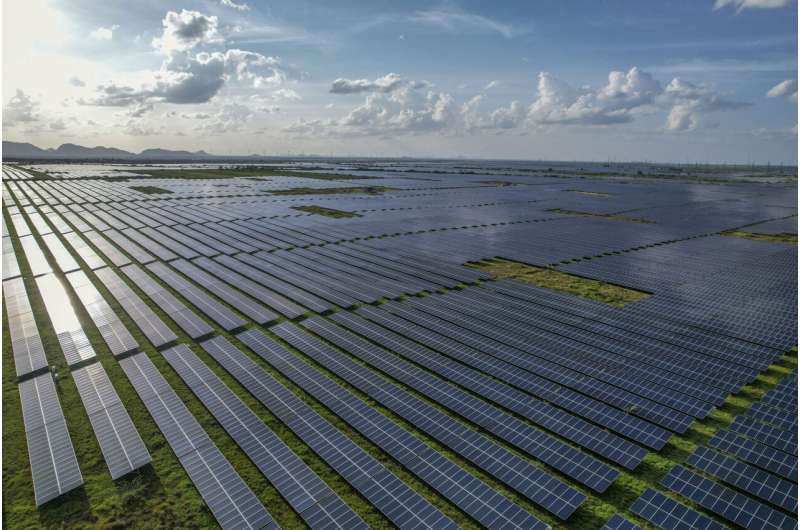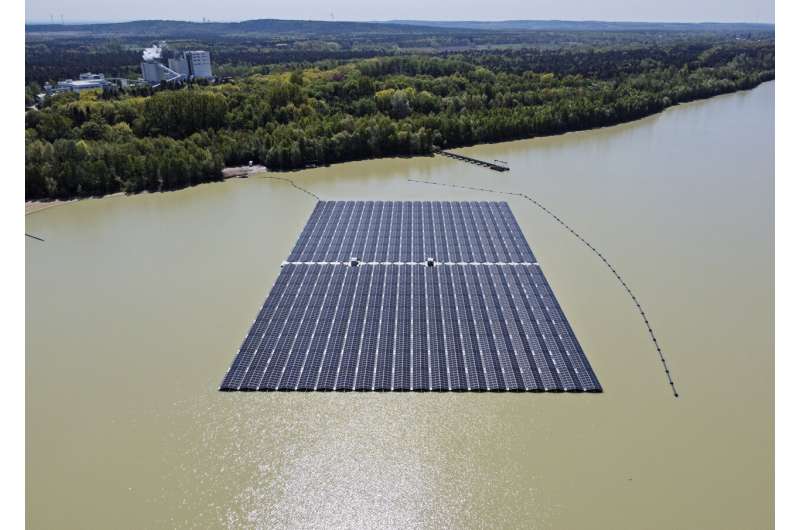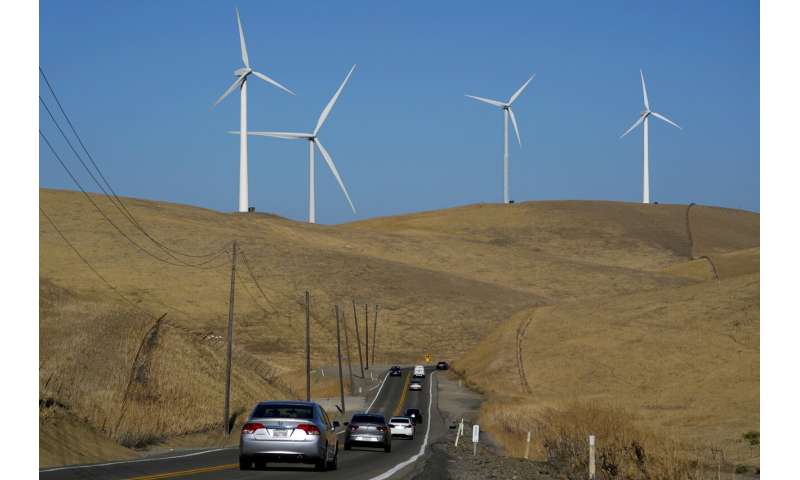Policy, climate, war make 2022 ‘pivot year’ for clean energy
For renewable energy companies in India, it’s a good time to be in business.
One of India’s largest renewable energy firms, Renew Power, will be among the corporations big and small hoping for a piece of a $2.6 billion government scheme that encourages the domestic manufacturing of components required to produce solar energy. It’s the biggest such incentive in India’s history.
Renew Power’s CEO Sumant Sinha said the government funds for clean energy send “a strong signal” that the country wants “to become a manufacturing location for renewable energy equipment and a global alternative to China eventually.”
“We are excited to be a part of this journey,” he said.
The company has over 100 clean energy projects across India and has become the world’s tenth largest solar and wind energy company in just over a decade.
Other major governments around the world have been green lighting ambitious renewable energy policies this past year that aim for major expansions of wind and solar energies, along with development of technologies like carbon capture, which captures carbon dioxide, a central cause of climate change, and stores it in the ground. Some of the policies also include tax credits to buy electric vehicles, heat pumps or energy efficient materials for construction.

The United States signed into law the Inflation Reduction Act, the most ambitious climate legislation in U.S. history, the European parliament passed the REPower EU plan to reduce dependence on Russian fossil fuels and fast forward the transition to clean energy and China announced ambitious schemes to enable the country to meet its 2030 clean energy goals five years ahead of schedule.
Experts say the task is now to build on this momentum in 2023, strengthen energy grid infrastructure and resolve backend issues which slow down the distribution and transmission of clean energy.
“From an energy perspective, 2022 will go down as a pivot year. For the first time, we have discernible proof that fossil fuel demand after 200 years of growth had reached a peak in 2019 and we are now bumping along a plateau before an inevitable decline,” said Kingsmill Bond, an energy strategist at the Rocky Mountain Institute, a clean energy non-profit group.
RMI’s research has found that global energy demand grew by around six additional exajoules in 2022—enough energy for around 6 million transatlantic flights. This is less than usual year-on-year growth as energy use is getting more efficient, the report said. Solar and wind supply growth this year was also calculated to be about six exajoules.

Bond added that the price of clean energy was getting closer to that of fossil fuels and in some cases it was cheaper.
A report by the International Energy Agency said that oil prices rose well above $100 per barrel in mid-2022 and high gas and coal prices accounted for electricity cost hikes around the world. But increased use of clean energy saved Asian countries, including China and India, a total of $34 billion in the past year, a separate report found.
Energy analysts say that the global energy crisis triggered by the Russian invasion of Ukraine and increasing climate threats such as the disastrous floods in Pakistan have accelerated the clean energy policies and big tickets investments that are needed to transition to renewable energy, especially wind and solar energy, around the world.
The sudden lack of access to fossil fuels and supply chain crunches were also other key reasons for the aggressive tilt towards cleaner energy. For example, Russia’s sale of gas to Europe was reduced to a trickle.

The invasion “had the effect of making it apparent that clean energy is the solution,” said Lauri Myllyvirta, a lead analyst at the Centre for Research on Energy and Clean Air.
Despite the positive momentum towards clean energy, there were some pitfalls too.
“Knee jerk reactions saw some places shift back to fossil fuels even if its at a higher price to the taxpayer,” said Vibhuti Garg, a New Delhi-based energy economist at the Institute for Energy Economics and Financial Analysis.
India’s coal production increased by about 17% from April to November 2022. Bangladesh increased its imports of natural gas and went ahead with opening thermal powerplants in the country. Germany, a strong advocate of clean energy, turned to coal and oil to address its short term power needs.
“It was a good year for renewable energy but sadly, not a bad year for fossil fuels either,” Garg added.

But spurred by momentum from previous years the clean energy sector worldwide nevertheless took off this year.
“You know, 20 years ago, renewables became the cleanest forms of energy and then in the last few years, renewables become the cheapest form of energy,” said Dave Jones, an energy analyst at London-based environmental think-tank, Ember. “Only this year, they’ve become the most secure form of energy.”
Another report by the IEA said that developments in 2022 triggered unprecedented momentum behind renewables, with the world set to add as much renewable power in the next five years as it did in the past 20.
“There is still a lot that needs to be done but I think 2022 will be remembered as the year in which for the first time, renewables have ticked all the boxes,” Jones said.
There’s acknowledgement from those in the sector that more work needs to be done to overcome the scale of the transition.
-
![Policy, climate, war make 2022 'pivot year' for clean energy]()
Vehicles move down Altamont Pass Road with wind turbines in the background in Livermore, Calif., Aug. 10, 2022. The past year saw major governments around the world green lighting ambitious renewable energy policies. The United States signed into law its Inflation Reduction Act. Credit: AP Photo/Godofredo A. Vásquez, File
-

A worker leaves a BP refinery in Gelsenkirchen, Germany, Tuesday evening, April 5, 2022. Germany, a strong advocate of clean energy, turned to coal and oil to address its short term power needs. Credit: AP Photo/Martin Meissner, File
Sinha of Renew Power hopes that government policies in 2023 focus on dealing with the bottlenecks that prevent clean energy growth.
“Currently the power sector is designed around fossil fuels and suddenly you have all this clean energy coming into the grid,” said Sinha.
“We need more proactive policies that find ways to make room for renewables.”
© 2022 The Associated Press. All rights reserved. This material may not be published, broadcast, rewritten or redistributed without permission.
Citation:
Policy, climate, war make 2022 ‘pivot year’ for clean energy (2022, December 21)
retrieved 21 December 2022
from https://techxplore.com/news/2022-12-policy-climate-war-pivot-year.html
This document is subject to copyright. Apart from any fair dealing for the purpose of private study or research, no
part may be reproduced without the written permission. The content is provided for information purposes only.
For all the latest Technology News Click Here
For the latest news and updates, follow us on Google News.

